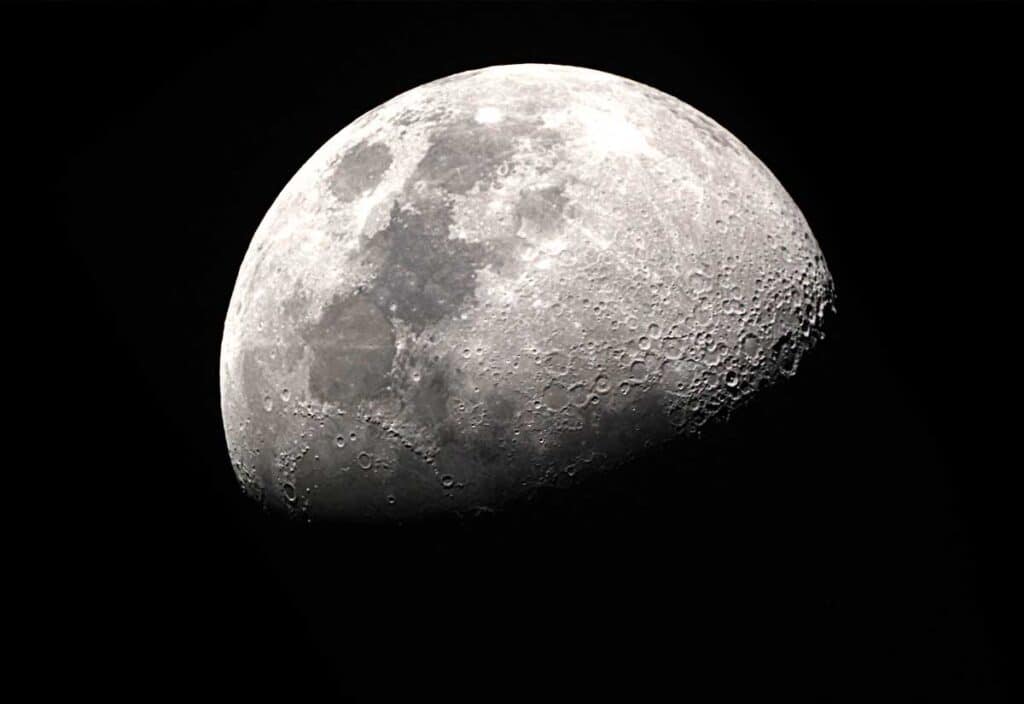The mission challenge for engineering teams from NASA is clear, should you decide to accept it:
“DESIGN, BUILD, AND TEST TERRESTRIAL ANALOG FULL-SCALE PROTOTYPES OF ROBOTIC ICY REGOLITH EXCAVATION AND TRANSPORTATION SYSTEMS.”- NASA Break the Ice Challenge
“Regolith” is the engineering term for “Moon dirt”, and when it comes to extracting value from dirt, there is no more qualified engineering expertise to be found for that task than in the mining industry.
Phase One of the Ice Break Challenge launched by NASA in 2020 saw 2 top contenders emerge from the mining state of Colorado, as the mining industry staked out important claims for future profit extraction from the Moon. When the keywords of the mission statement are “Excavation” and “Transportation”, it’s time for the innovators of modern mining to step up.
And step up they did. With a little help from the concrete industry. We’ll dive more into that intriguing inter-industry engineering connection later on in Engineering on the Moon Part 2. But a lunar concrete industry would require on site water, so first things first.
Phase One required competing engineering teams to include water delivery as part of the 15-day mission parameters. That’s not as simple as it sounds when the Moon’s South Pole is the operating site, where the sun is always low on the horizon and the numerous craters where ice accumulates are in constant, permanent shadow.
“These permanently shadowed craters feature some of the lowest temperatures in the solar system — down to -414 degrees Fahrenheit (-248 Celsius). Water ice is stable at these temperatures and it is believed that some of these craters harbor significant ice deposits.”
While the manned Apollo program focused on slightly more hospitable landing sites near the equator, robots have handled the surveying and explorations at the Moon’s south pole, making it the most robotically mapped area on the moon. According to Noah Petro, an LRO project scientist based at NASA’s Goddard Space Flight Center in Greenbelt, Maryland, “We’ve mapped every square meter, even areas of permanent shadow,”
Colorado Steps up in Moon Mining Innovation
Two of the top 3 prizes awarded by NASA in Phase One went to Colorado teams where centuries of mining tradition and state-of-the-art excavation and the mining engineering talent behind them runs deep.
Let’s get up to speed and check out the top moon excavation prototypes from the winners of Phase One.
Phase One Winners in NASA’s Break the Ice Challenge
NASA has completed Phase One of their “Break the Ice Challenge”, awarding $250,000 in runner-up prize money. $25,000 each was awarded in the summer of 2021 to the 10 winning engineering teams from diverse companies and universities across the country. The runners-up included:
- AggISRU from Texas A&M University in College Station.
- Aurora Robotics from the University of Alaska in Fairbanks.
- Lunar Lions from the Columbia University Robotics Club in New York.
- OffWorld Robotics in Pasadena, California.
- Oshkosh Corporation in Oshkosh, Wisconsin.
- Rocket M in Mojave, California.
- Space Trajectory from South Dakota State University in Brookings.
- Team AA-Star in Redmond, Washington.
- Team LIQUID from Altadena, California.
- Terra Engineering in Gardena, California.
But that was just the consolation prize for innovative entries that can excavate the moon’s most valuable commodity for further human development, the icy regolith that contains the essential in situ water (meaning “situated in the original place).
The Colorado School of Mines in Golden Puts the LIDS on Second Place
The prestigious university with roots going back to 1874 upheld their legacy as one of the best engineering schools in the US, earning a cool $75,000 for its proposed Lunar Ice Digging System, or LIDS.
The LIDS is a 3-rover operation deploying an excavator, a regolith hauler and a water hauler. Communications and navigation systems are onboard. Both haulers sport robotic arms for nimble assembling tasks such as maintenance and repairs.
All three vehicles would be teleoperated from a local remote lunar surface command hub, taking the” digital nomad” concept from humans to robotics, its ultimate application in remote lunar excavation.
Earthbound (for now!) miners have been developing 5G tech, mobile fleet management, SCADA (Supervisory Control and Acquisition) and other advanced technologies for decades.
Now the challenge is to make those technologies feasible for profitable performance in the hazardous hostile environment of the Moon.
But Colorado wasn’t done breaking the lunar ice yet.
The GROWLER Makes the Grade: Austere Engineering of Littleton, Colorado takes Third Place
$50,000 was the grand reward for Austere Engineering’s Grading and Rotating for Water Located in Excavated Regolith (GROWLER) system. We think Austere’s Curtis Purrington should get a bonus just for coming up with that clever acronym. But the GROWLER lives up to its name.
The Austere Engineering GROWLER system would operate in a logical sequence familiar to traditional miners who know that survey comes prior to extraction in the mineral production business.
GROWLER has its priorities straight, first establishing a local positioning system and mapping the surface and detecting underground rocks that could be potential disruptions to the continuous 15-day excavation that NASA is calling for in Phase One of the challenge.
Once the GROWLER has an “all clear” route it goes into production mode, excavating that precious icy regolith with a rotary tiller before extracting and delivering water locked in (hopefully!) those enigmatic dark spots at the South Pole of the Moon.
Redwire Space of Jacksonville, Florida, won first place and $125,000 with L-REX Lunar Regolith Excavator
Redwire’s elegant two-rover system is designed for simplicity and robust durability. The company’s Lunar Regolith Excavator (L-Rex) would excavate and transport loads of icy regolith. The versatile, low-mass transportation rover called Lunar Transporter (L-Tran) would be responsible for deploying the excavator and delivering regolith and ice. The First Place animation of LREX and its L-Tran team mate in motion is like an industrial ballet on the moon.
Engineers Wanted: NASA Engineering Competition Phase 2
NASA’s Break the Ice Challenge continues in 2022. The goal of Phase 2 is to further the development of technologies that can excavate and transport large quantities of icy lunar regolith and can continuously operate for 15 days.
Phase 2 will not focus on ice/water delivery hardware or equipment. Through a prototype demonstration, teams must show that their solutions address the reliability, durability, and traversability challenges these systems must overcome to operate for long durations.
With Phase One completed last August of 2021, NASA is accepting entries for Phase 2. Engineering teams have until November 4th to submit prototypes.
https://breaktheicechallenge.com/how-to-enter/
Now that we’re all up to speed on Phase One, Engineering on the Moon Part 2 will continue with a look at what it takes to claim the prizes when engineers shoot for the Moon.
About Resource Erectors
Engineering and recruiting the top talent behind it is what we’re all about here at Resource Erectors. We maintain connections with industry-leading companies in mining, concrete, aggregates, civil construction, bulk materials, logistics, sales, and more.
For the top professional candidates, six figure salaries and career advancing opportunities across the board of heavy industries are always available at Resource Erectors.
Whether you’re looking to build or join your next engineering dream don’t hesitate to contact us.











